
STAT’s Hopkins co-authors National Academies report. CAREER Awards keep coming. DOE funds NEWT desalination research.

STAT’s Hopkins co-authors National Academies report. CAREER Awards keep coming. DOE funds NEWT desalination research.

Researchers can ‘see’ crystals perform their dance moves
Rice University researchers already knew the atoms in perovskites react favorably to light. Now they’ve seen precisely how the atoms move when the 2D materials are excited with light. Their study this week in Nature Physics details the first direct measurement of structural dynamics under light-induced excitation in 2D perovskites.
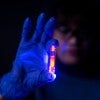
Rice scientists’ discovery could lead to new Alzheimer’s therapies
A new approach to the study of amyloid-beta, a peptide associated with Alzheimer’s disease, has led Rice University scientists to findings that could have a significant impact on the understanding and potential treatment of the disease.

Naomi Halas named University Professor
Rice University has promoted nanotechnology pioneer Naomi Halas to its highest academic rank, University Professor. Halas, a 33-year member of Rice’s faculty, becomes only the 10th person and second woman to earn the title in Rice’s 111-year history.
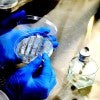
New enzyme could mean better drugs
Biomolecular engineers at Rice University identified a new enzyme that catalyzes the Nobel Prize-winning Diels-Alder reaction.

Rice’s Jamie Padgett wins Texas academy’s O’Donnell Award
Rice University structural engineer Jamie Padgett has received the 2023 Edith and Peter O’Donnell Award in Engineering from The Academy of Medicine, Engineering and Science of Texas.
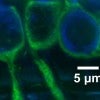
Inner ear has a need for speed
Rice bioengineers and applied physicists, together with and colleagues at the University of Chicago and the University of Illinois Chicago, have unlocked the mechanism of the fastest synapses in the human body. A previously hidden mechanism in the inner ear that helps mammals balance via the fastest-known signal in the brain, and researchers from Rice University, the University of Chicago and the University of Illinois Chicago have modeled a hidden mechanism in the inner ear that helps mammals balance via the fastest-known signal in the brain.
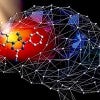
New fluorescent dye can light up the brain
Rice chemist Han Xiao and Stanford researcher Zhen Cheng have developed a tool for noninvasive brain imaging that can help illuminate hard-to-access structures and processes. Their small-molecule dye is the first of its kind that can cross the blood-brain barrier, allowing researchers to differentiate between healthy brain tissue and a glioblastoma tumor in mice.

DARPA grant will fund hunt for drug that can keep people warm
Rice University bioengineer Jerzy Szablowski has won a prestigious DARPA Young Faculty Award to identify nongenetic drugs that can temporarily enhance the human body’s resilience to extreme cold exposure.
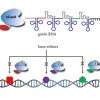
Rice University scientists get fungi to spill their secrets
As anyone who has ever attended a cocktail party can tell you, shedding inhibitions makes you more talkative and possibly more prone to divulging secrets. Fungi, it turns out, are no different from humans in this respect.
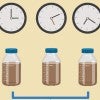
Daylong wastewater samples yield surprises
Rice engineers find snapshots lead to bias in testing wastewater for antibiotic-resistant genes.

Mikos wins Jensen Tissue Engineering Award
Bioengineer Antonios Mikos receives the 2023 Jensen Tissue Engineering Award.

DesRoches outlines 2023 goals to faculty
President Reginald DesRoches delivers his inaugural State of the University
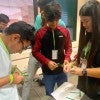
Students immersed in STEM at daylong workshop
Rice hosts elementary, middle and high school students at the Fresh Start Engineering Workshop.
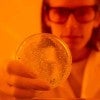
Pathogenic sensor’s surprising capabilities revealed
Rice synthetic biologists have uncovered new capabilities of a genetically encoded sensor that allows salmonella, E. coli and other pathogens to sicken millions of people each year.